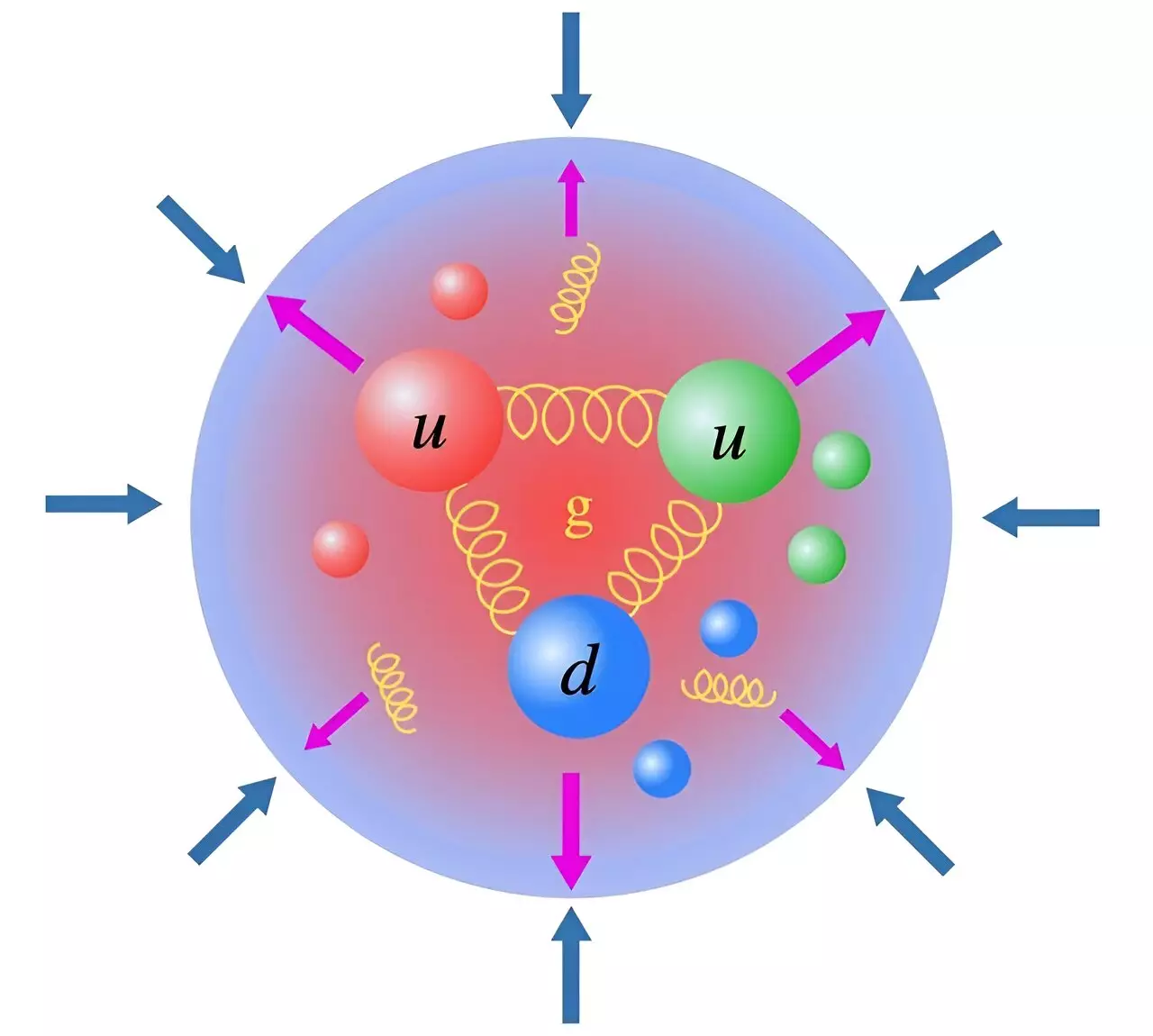Quantum chromodynamics (QCD) serves as the theoretical framework for delving into the intricate forces at play within atomic nuclei and the particles that make them up. One of the key areas of study within QCD involves unraveling how quarks and gluons are encapsulated within nucleons such as protons and neutrons. It is important to note that mathematically, the forces operating inside nucleons can be likened to the force of gravity. However, the emergence of quantum effects like the “trace anomaly” presents a deviation from this conventional pattern, exerting a significant influence within nucleons. These quantum effects play a pivotal role in maintaining the delicate equilibrium between the outward pressure inhabiting nucleons and the cohesive forces holding them together.
Measuring the Trace Anomaly
Recent investigations have shed light on the ability to quantify the trace anomaly through the production of charmonium. Charmonium represents a specific subatomic particle generated at prominent research facilities like the Thomas Jefferson National Laboratory and the upcoming Electron Ion Collider. By leveraging a combination of experimental data from charmonium production and theoretical computations rooted in QCD, researchers can delve into the intricate details of the trace anomaly. The study detailing these findings is documented in the esteemed journal Physics Letters B. By juxtaposing empirical observations with theoretical postulations regarding the trace anomaly, researchers can glean invaluable insights into the distribution of mass and pressure within hadrons, which are composite particles composed of quarks and gluons.
Unified Understanding Across Various Physical Systems
Drawing parallels between the confinement of particles within hadrons and superconductors underscores the use of a shared mathematical framework to describe this phenomenon. This correlation mirrors the role played by the cosmological constant and dark energy concerning the energy and pressure dynamics encapsulated within the equations delineating the expansion and acceleration of the universe. Moreover, the ability to experimentally ascertain and computationally derive the trace anomaly within lattice QCD presents a direct avenue for exploring and comprehending the intricate dynamics underpinning quantum chromodynamics. These aspects serve as quintessential examples exemplifying the ubiquitous nature of energy, pressure, and confinement across a spectrum of physical systems, spanning from the minute realms of the microscopic to the grandeur of cosmic scales. By unifying these concepts, a coherent understanding emerges, shedding light on a diverse array of phenomena in the realm of physics.


Leave a Reply